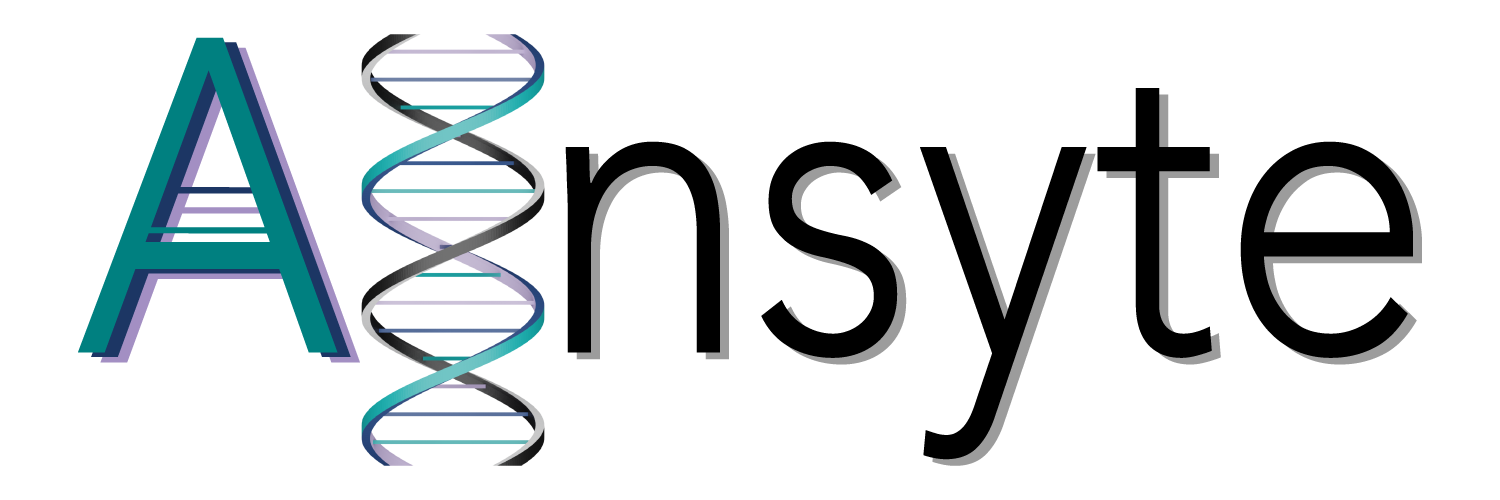
Example Coaching Plan
Coaching Topic
Summary Plan
The primary aim of this life coaching plan is to empower individuals to express their emotions more openly and effectively, leading to deeper and more fulfilling relationships. By following this structured plan, individuals can enhance their emotional intelligence, build stronger connections, and achieve personal growth. The plan provides a clear, measurable path to success, ensuring that progress can be tracked and adjustments made as needed to achieve the desired outcomes.
- Increase Self-Awareness and Understanding
- Goal: To develop a deeper understanding of one's emotional patterns and triggers through daily emotion tracking and learning about emotional intelligence.
- Measure: Consistent journal entries and completion of educational resources.
- Develop Emotional Vocabulary
- Goal: To expand the individual's emotional vocabulary, enabling more precise and accurate expression of emotions.
- Measure: Regular use of new emotion words and tools like emotion cards.
- Practice Emotional Expression
- Goal: To build confidence and skill in expressing emotions through setting specific goals, role-playing scenarios, and using "I" statements.
- Measure: Achievement of emotional expression goals and participation in role-playing exercises.
- Enhance Empathy and Listening Skills
- Goal: To improve the ability to understand and connect with others' emotions through active listening and empathy exercises.
- Measure: Regular engagement in listening and empathy exercises.
- Build Emotional Connections
- Goal: To strengthen relationships by sharing positive emotions and maintaining regular emotional check-ins with close ones.
- Measure: Daily sharing of positive emotions and weekly check-ins.
- Overcome Emotional Barriers
- Goal: To identify and overcome barriers to emotional expression, such as fear of vulnerability, through mindfulness, meditation, and strategic approaches.
- Measure: Monthly addressing of emotional barriers and daily mindfulness practices.
- Seek Support and Feedback
- Goal: To gain support and insights from joining support groups and regular coaching sessions, ensuring continuous guidance and accountability.
- Measure: Monthly attendance of support group sessions and bi-monthly coaching sessions.
- Evaluate Progress and Adjust Goals
- Goal: To regularly review progress and adjust goals and strategies as needed, ensuring the plan remains relevant and effective.
- Measure: Monthly progress reviews and quarterly goal adjustments.
- Maintain Long-Term Growth and Celebrate Milestones
- Goal: To engage in continuous learning, celebrate milestones, and reflect on long-term changes to maintain and enhance emotional expression skills.
- Measure: Completion of new learning activities every six months, regular celebration of milestones, and bi-annual reflection on progress.
Phase 1: Self-Awareness and Understanding
Step 1 - Daily Emotion Tracking:
Narrative for Coach: Discuss the importance of self-awareness in emotional expression. Encourage the client to maintain a daily emotion journal, recording what emotions they felt, the situations that triggered these emotions, and their responses.
Educational Explanation: Self-awareness is the foundation of emotional intelligence. Understanding one's emotional triggers and patterns is crucial for effective emotional regulation and expression. By tracking emotions daily, individuals can identify recurring patterns and gain insights into their emotional life.
Goal: Increase awareness of emotional patterns and triggers.
Measure: Consistent daily entries for at least 30 days.
Step 2 - Learn About Emotional Intelligence:
Narrative for Coach: Introduce the concept of emotional intelligence and its components. Recommend resources such as "Emotional Intelligence" by Daniel Goleman and discuss the impact of emotional intelligence on personal and professional relationships.
Educational Explanation: Emotional intelligence involves the ability to recognize, understand, and manage one's own emotions, as well as the emotions of others. It includes self-awareness, self-regulation, motivation, empathy, and social skills. Enhancing emotional intelligence can improve communication, relationships, and overall well-being.
Goal: Understand the components of emotional intelligence and their impact on relationships.
Measure: Completion of reading or course with notes and reflections.
Phase 2: Developing Emotional Vocabulary
Step 3: Expand Emotional Vocabulary
Narrative for Coach: Discuss the importance of having a rich emotional vocabulary. Encourage the client to learn new emotion words and practice using them in conversations and journal entries.
Educational Explanation: A rich emotional vocabulary allows individuals to accurately describe and communicate their emotions. This enhances self-awareness and helps others understand their feelings better. It also reduces misunderstandings and fosters better emotional connections.
Goal: Improve the ability to accurately describe emotions.
Measure: Use a new emotion word at least once daily in conversations or journal entries.
Step 4: Use Emotion Cards
Narrative for Coach: Introduce emotion cards or an emotion wheel as tools to help identify and express feelings. Encourage the client to use these tools during conversations.
Educational Explanation: Emotion cards and wheels are visual aids that help individuals identify and articulate their emotions. These tools can be particularly useful in real-time conversations, making it easier to recognize and express emotions accurately.
Goal: Make it easier to recognize and articulate emotions in real-time.
Measure: Regular use of emotion cards in at least 3 conversations per week.
Phase 3: Practicing Emotional Expression
Step 5: Set Emotional Expression Goals
Narrative for Coach: Work with the client to set specific, achievable goals for expressing emotions. Discuss the importance of gradually increasing comfort and frequency in expressing emotions.
Educational Explanation: Setting goals for emotional expression provides a clear and measurable path for improvement. Gradually increasing the frequency and comfort level of expressing emotions helps build confidence and reduces anxiety around emotional expression.
Goal: Gradually increase comfort and frequency in expressing emotions.
Measure: Track progress toward achieving these goals weekly.
Step 6: Role-Playing Scenarios
Narrative for Coach: Conduct role-playing exercises to practice expressing emotions in a safe environment. Provide feedback and guidance to help the client build confidence and skill.
Educational Explanation: Role-playing is a technique used in therapy and coaching to simulate real-life scenarios. It allows individuals to practice and refine their skills in a controlled setting, building confidence and reducing anxiety about actual interactions.
Goal: Build confidence and skill in emotional expression.
Measure: Conduct role-playing sessions at least twice a month.
Step 7: Use "I" Statements
Narrative for Coach: Teach the client how to use "I" statements to express emotions. Practice this technique in conversations and role-playing scenarios.
Educational Explanation: "I" statements are a communication tool that allows individuals to express their feelings without blaming or criticizing others. This reduces defensiveness and fosters open, constructive dialogue.
Goal: Communicate emotions without blaming or criticizing others.
Measure: Incorporate "I" statements in at least one conversation daily.
Phase 4: Enhancing Empathy and Listening Skills
Step 8: Active Listening Practice
Narrative for Coach: Discuss the importance of active listening in building empathy and emotional connections. Engage in active listening exercises with the client.
Educational Explanation: Active listening involves fully concentrating, understanding, responding, and remembering what is being said. It is a key component of effective communication and empathy, helping individuals connect with others on a deeper emotional level.
Goal: Improve empathy and emotional connection with others.
Measure: Participate in active listening exercises at least once a week.
Step 9: Empathy Exercises
Narrative for Coach: Introduce empathy exercises, such as imagining oneself in another person's situation. Reflect on these exercises and discuss their impact on understanding others' emotions.
Educational Explanation: Empathy exercises help individuals develop the ability to understand and share the feelings of others. This enhances emotional connections and improves interpersonal relationships.
Goal: Enhance the ability to empathize with others' feelings.
Measure: Complete empathy exercises at least twice a month.
Phase 5: Building Emotional Connections
Step 10: Share Positive Emotions
Narrative for Coach: Encourage the client to make a habit of sharing positive emotions and experiences with others. Discuss the impact of positive emotional interactions on relationships.
Educational Explanation: Sharing positive emotions strengthens relationships by fostering mutual appreciation and connection. Positive emotional interactions contribute to overall relationship satisfaction and well-being.
Goal: Strengthen relationships through positive emotional interactions.
Measure: Share positive emotions with at least one person daily.
Step 11: Schedule Regular Check-Ins
Narrative for Coach: Advise the client to schedule regular check-ins with close friends or family to discuss emotions and experiences. Reflect on these check-ins during coaching sessions.
Educational Explanation: Regular check-ins maintain open lines of communication and emotional connection. They provide opportunities to express emotions, resolve issues, and deepen relationships.
Goal: Maintain open lines of communication and emotional connection.
Measure: Conduct check-ins at least once a week.
Phase 6: Overcoming Emotional Barriers
Step 12: Identify and Challenge Emotional Barriers
Narrative for Coach Help the client identify barriers to emotional expression, such as fear of vulnerability. Develop strategies to overcome these barriers and discuss progress.
Educational Explanation Identifying and challenging emotional barriers is crucial for personal growth. Overcoming these barriers allows individuals to express emotions more freely and authentically.
Goal Reduce obstacles that hinder emotional expression.
Measure Address and challenge at least one emotional barrier monthly.
Step 13: Mindfulness and Meditation
Narrative for Coach Introduce mindfulness and meditation practices to increase emotional awareness and regulation. Guide the client through initial sessions and discuss their experiences.
Educational Explanation Mindfulness and meditation enhance emotional awareness and regulation by promoting present-moment focus and reducing stress. These practices improve overall emotional well-being and resilience.
Goal Enhance the ability to stay present and manage emotions effectively.
Measure Meditate or practice mindfulness for at least 10 minutes daily.
Phase 7: Seeking Support and Feedback
Step 14: Join a Support Group
Narrative for Coach Encourage the client to join a support group or workshop focused on emotional expression and personal growth. Discuss the benefits of group support and shared experiences.
Educational Explanation Support groups provide a safe space for individuals to share experiences, gain insights, and receive encouragement from others facing similar challenges. This fosters a sense of community and mutual support.
Goal Gain support and learn from others' experiences.
Measure Attend at least one support group session monthly.
Step 15: Regular Coaching Sessions
Narrative for Coach Schedule regular sessions to discuss the client's progress, challenges, and achievements. Provide guidance and accountability in their journey to improve emotional expression.
Educational Explanation Regular coaching sessions offer ongoing support, feedback, and accountability. They help clients stay focused on their goals and make consistent progress.
Goal Receive guidance and accountability in improving emotional expression.
Measure Attend coaching sessions at least twice a month.
Phase 8: Evaluating Progress and Adjusting Goals
Step 16: Monthly Progress Reviews
Narrative for Coach Conduct monthly reviews to evaluate the client's progress toward their emotional expression goals. Identify successes, areas for improvement, and adjust strategies as needed.
Educational Explanation Regular progress reviews help clients stay on track and make necessary adjustments to their plans. This ensures continuous improvement and goal achievement.
Goal Identify successes and areas for improvement.
Measure Complete a progress review at the end of each month.
Step 17: Adjust Goals as Needed
Narrative for Coach Discuss the importance of flexibility in goal-setting. Adjust the client's goals and strategies based on their progress and feedback.
Educational Explanation Flexibility in goal-setting allows individuals to adapt to changing circumstances and maintain motivation. Regularly adjusting goals ensures they remain relevant and achievable.
Goal Ensure that the plan remains relevant and effective.
Measure Update goals and strategies at least quarterly.
Phase 9: Long-Term Maintenance and Growth
Step 18: Continuous Learning
Narrative for Coach Encourage the client to engage in continuous learning through reading, courses, and workshops on emotional intelligence and personal growth. Discuss the benefits of lifelong learning.
Educational Explanation Continuous learning helps individuals stay updated with new insights and techniques in emotional intelligence and personal growth. It promotes ongoing development and improvement in emotional expression.
Goal Maintain and enhance skills in emotional expression.
Measure Complete at least one new learning activity every six months.
Step 19: Celebrate Milestones
Narrative for Coach Discuss the importance of celebrating milestones and achievements. Encourage the client to recognize and reward their progress to stay motivated.
Educational Explanation Celebrating milestones helps reinforce positive behavior and progress. It provides a sense of accomplishment and motivates individuals to continue striving towards their goals.
Goal Recognize and reward progress to stay motivated.
Measure Celebrate each significant milestone with a personal reward or acknowledgment.
Step 20: Reflect on Long-Term Changes
Narrative for Coach Encourage the client to periodically reflect on the long-term changes in their emotional expression and relationships. Discuss the impact of their efforts and areas still needing work.
Educational Explanation Reflection helps individuals understand the impact of their efforts and identify areas for further improvement. It promotes self-awareness and continuous growth.
Goal Understand the impact of efforts and continue to grow.
Measure Write a reflection every six months on the improvements and areas still needing work.
Conclusions
This 20-step life coaching plan is designed to help you improve your emotional expression by increasing self-awareness, expanding your emotional vocabulary, practicing emotional expression, enhancing empathy, building emotional connections, overcoming barriers, seeking support, evaluating progress, and maintaining long-term growth. By following this plan and setting measurable goals, you can make significant improvements in your ability to express emotions openly and effectively, leading to more meaningful and fulfilling relationships.





